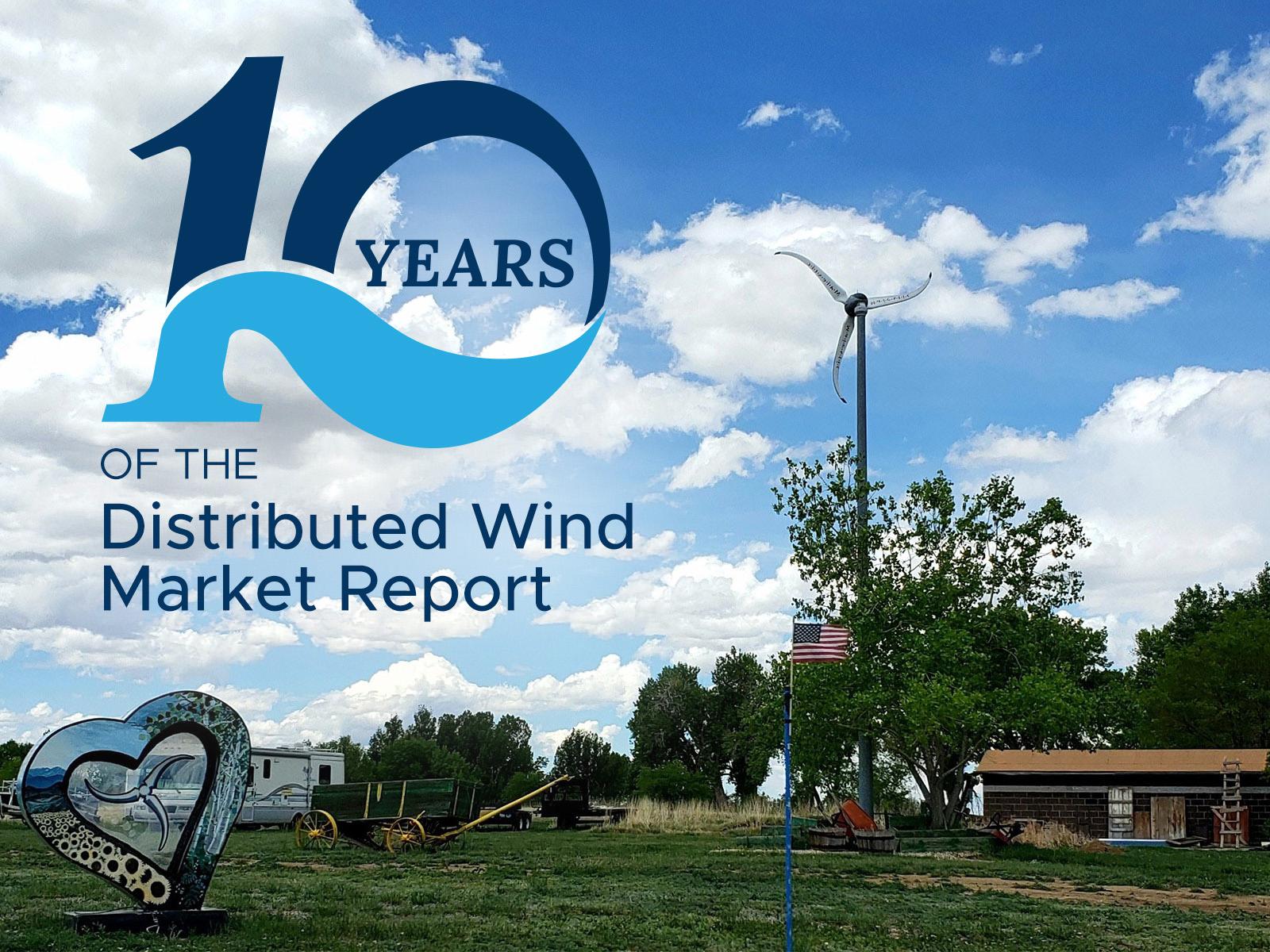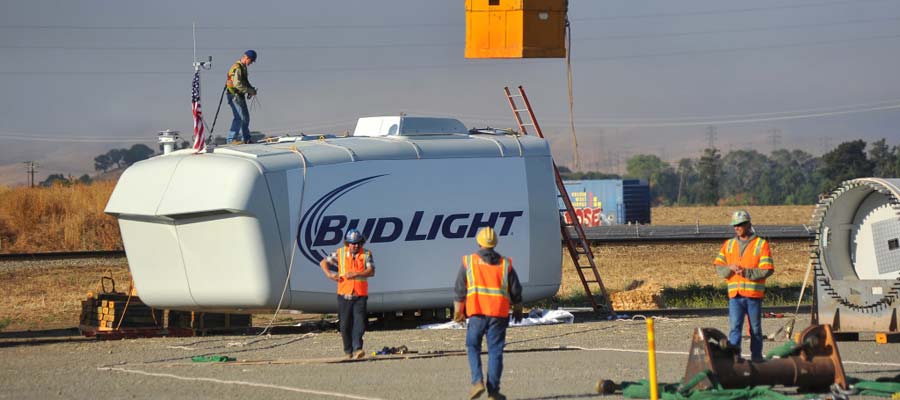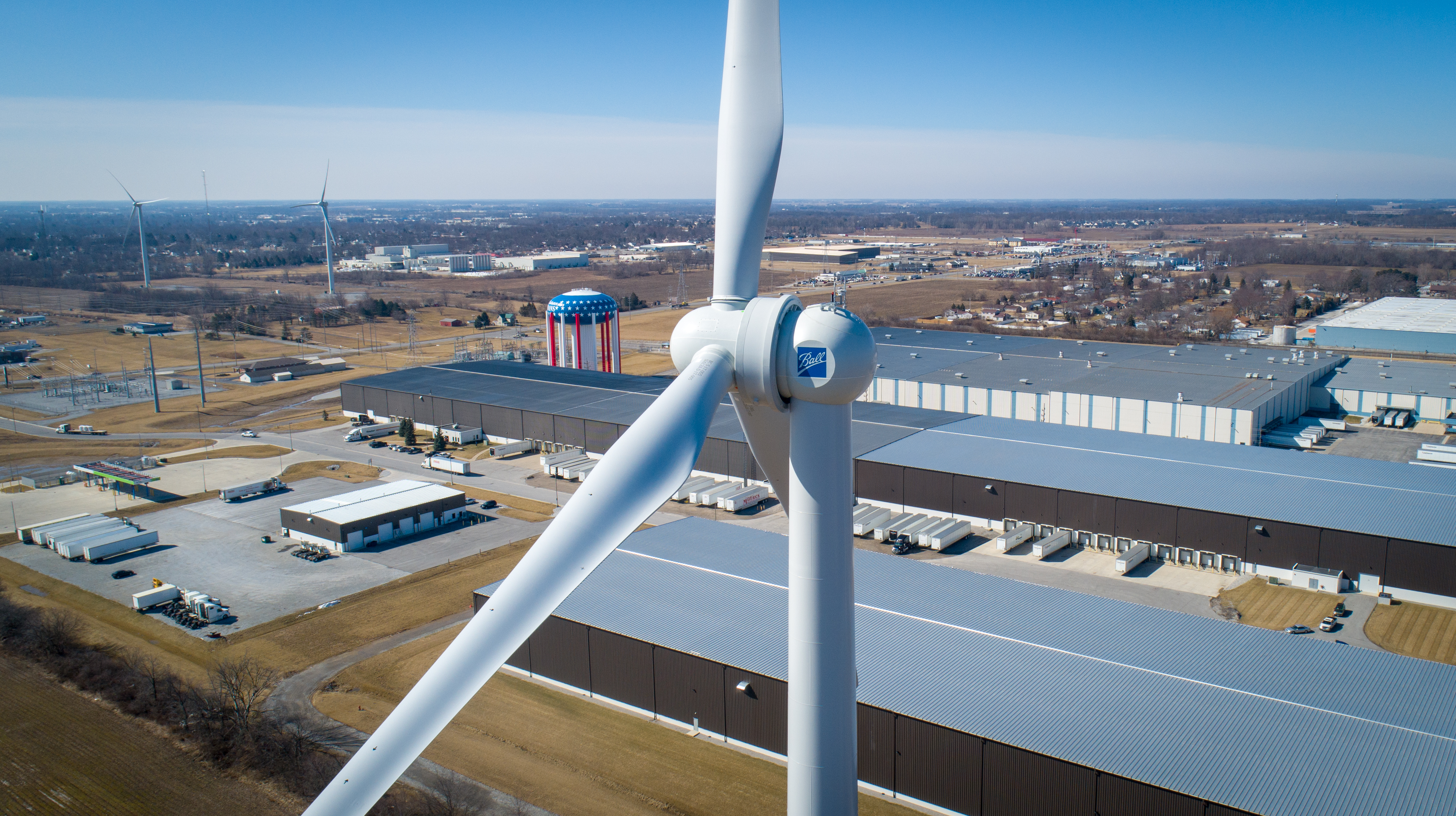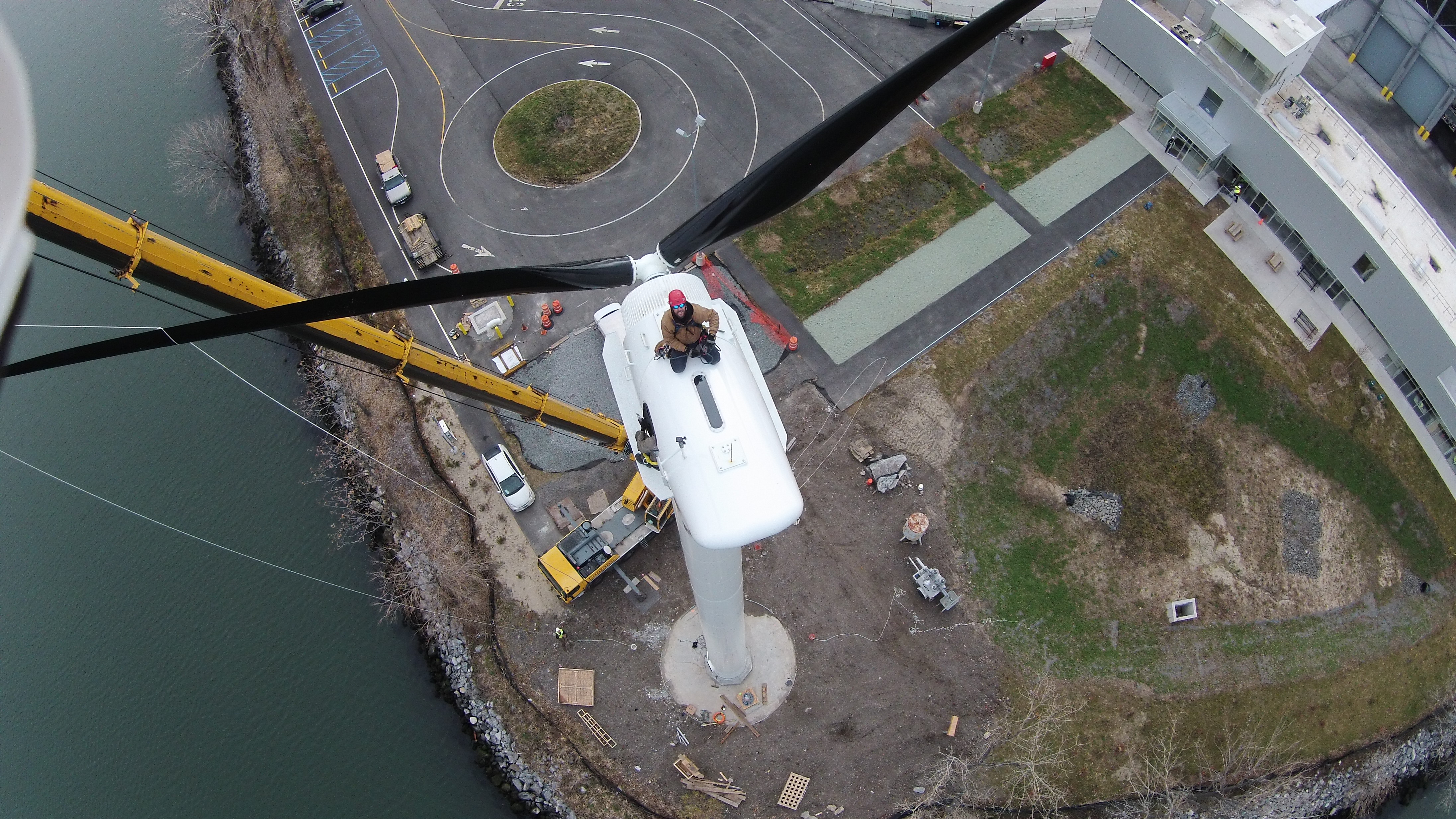10 Years of the Distributed Wind Market Report
Advancing wind energy technology as a distributed energy source

10 years of the Distributed Wind Market Report
(Composite image by Lindsay Sheridan and Shannon Colson | Pacific Northwest National Laboratory)
For the past 10 years, wind energy experts at Pacific Northwest National Laboratory (PNNL) have led the charge in developing the annual Distributed Wind Market Report on behalf of the U.S. Department of Energy’s Wind Energy Technologies Office.
Distributed wind projects are wind turbines installed near where their energy is consumed, such as for homes, businesses, and communities. Distributed wind is often used to generate electricity for remote communities or offset a portion of energy costs for grid-connected customers.
"For the past decade, this report has provided a comprehensive overview of the distributed wind market that is helping to guide future investments and decisions by industry, utilities, federal and state agencies, and other interested parties," said Alice Orrell, PNNL's distributed wind research lead.
See PNNL's Distributed Wind website for past years' reports and other helpful information.
The Distributed Wind Market Report: 2022 Edition
In honor of the 10th year of the Distributed Wind Market Report, below are 10 projects that highlight the diverse ways in which distributed wind is deployed to power America and provide homes, businesses, and communities with a clean, low-cost source of renewable energy.
Anheuser-Busch

The Anheuser Busch Plant in California uses two large behind-the-meter General Electric wind turbines to power the brewery’s onsite energy needs. The 1.5-MW and 1.6-MW turbines were installed in 2011 and 2014, respectively, and produce an estimated 7,400 MWh of energy annually. Together, these two turbines generate enough energy to brew, package, and ship over 57,000 cases of beer each day. When resource conditions are favorable, the onsite wind and solar energy technologies are capable of providing 30 percent of the brewery’s electricity needs.
Central Maui Landfill Refuse and Recycling Center

Installed in 2015, three Bergey Excel 10 kW wind turbines offset between two-thirds and 90 percent of the Central Maui Landfill Refuse and Recycling Center’s annual energy consumption (about 60,000 kWh of electricity per year). The wind turbines help power the offices at the landfill, as well as the site’s leachate pump and gas flare, saving the Maui County facility approximately $18,000 annually. The wind turbines are net-metered, which means the facility is compensated for any excess electricity sent back to the local utility grid.
Method Soap

Located in Chicago, Method’s soap manufacturing facility (dubbed the “Soapbox”) captures the energy resource potential of the “Windy City” with its refurbished NEG Micon 600 kW wind turbine to produce roughly half of the Soapbox’s annual electric needs. The eco-friendly facility also features solar PV panels on axis-tracking mounts that shift position with the sun and a 75,000-square-foot rooftop greenhouse for growing produce. The Soapbox was built on a former brownfield—a toxic site—and the campus’s wind turbine and other green assets have helped it achieve LEED Platinum certification.
National Nuclear Security Administration Pantex Renewable Energy Project

The Pantex Plant in Amarillo, Texas—the United States’ only nuclear weapons assembly and disassembly facility—is home to the largest government-owned wind farm in the country. The five turbine installation generates 43,000,000 kWh of energy annually, producing roughly 60 percent of the electricity used at the Pantex Plant (equivalent to the energy demand of 3,500 households). The wind farm’s clean energy generation helps reduce the Pantex Plant’s carbon footprint significantly, equal to planting 850,000 trees.
Ball Corporation and Whirlpool Corporation

The manufacturing facilities of Whirlpool Corporation and Ball Corporation, both located in Findlay, Ohio, are partially powered by five 1.5-MW Goldwind turbines, which offset roughly 20% of each facility’s power demand. Under individual 20-year power purchase agreements with One Energy Enterprise LLC who owns and operates the turbines, the net metered wind turbines supply 3 MW of power to Whirlpool Corporation and 4.5 MW of power to Ball Corporation.
Majestic Roofing

Loveland, Colorado is a City with HeARTTM. Throughout the city, 36 uniquely decorated fiberglass heart sculptures created by local artists can be admired. Each heart is individually sponsored and when a new heart is ready to display, the Loveland Chamber of Commerce does a HeART revealing ceremony to share the new heart with the community.
Majestic Roofing of Loveland has been supporting the northern Colorado community with roofing services for decades. They also support the Loveland community by sponsoring a heart sculpture at their headquarters. What do roofs and art have to do with distributed wind? A Skystream wind turbine is located at the Majestic Roofing headquarters. The heart sculpture, crafted in 2009 by artist Ross Lampshire, pays tribute to the Skystream by featuring the blades at the center.
Southeast Wyoming Welcome Center

Located just south of Cheyenne, the Southeast Wyoming Welcome Center is powered with solar panels and five 2.4-kW Skystream wind turbines. The turbines have produced more than 171 MWh of energy since their debut in 2012 and they’re powering more than your average highway rest stop. The Southeast Wyoming Welcome Center is an informative small museum with exhibits on the region’s natural and cultural history. If you’re visiting the Cheyenne area, be sure to stop by the Welcome Center and get photos of the outlaw jail cell, the mammoth skeleton, and the Skystreams, of course!
Missisquoi National Wildlife Refuge

The Missisquoi National Wildlife Refuge in Vermont, part of the U.S. Fish & Wildlife Service, has a Bergey Excel 10-kW behind-the-meter small wind turbine on-site that was installed in 2006. It is connected to the local utility grid for net metering. The refuge also has green building design features and a 15-kilowatt rooftop solar PV array. The solar and wind generation complement each other on a monthly basis, with more solar in the summer and more wind in the winter, to provide the refuge with a fairly constant amount of renewable energy year round. The wind and solar generation provide about 30 percent of the refuge’s energy needs.
Sims Municipal Recycling

Located on the windy waterfront of Brooklyn, Sims Municipal Recycling’s Sunset Park Material Recovery Facility, New York City’s main processing plant for recyclables, is partially powered by a 100-kW Northern Power Systems wind turbine. The wind turbine, installed in 2014, was New York City’s first commercial-scale wind turbine. Combined with onsite rooftop solar, renewable resources generate up to 20 percent of the facility’s electric needs.
AXYS Technologies Wind Resource Assessment Buoy

AXYS Technologies Inc.’s wind resource assessment buoys capture key information about offshore wind speeds and directions to inform wind resource and project potential. These buoys are powered by a small wind turbine, a solar panel, and a back-up diesel generator. The Department of Energy currently owns two of these buoys, which use LiDAR (Light Detection and Ranging) technology to collect atmospheric and oceanographic measurements. The small Zephyr Airdolphin distributed wind turbines aboard the buoys are powering the latest research to advance the offshore wind industry in the United States.